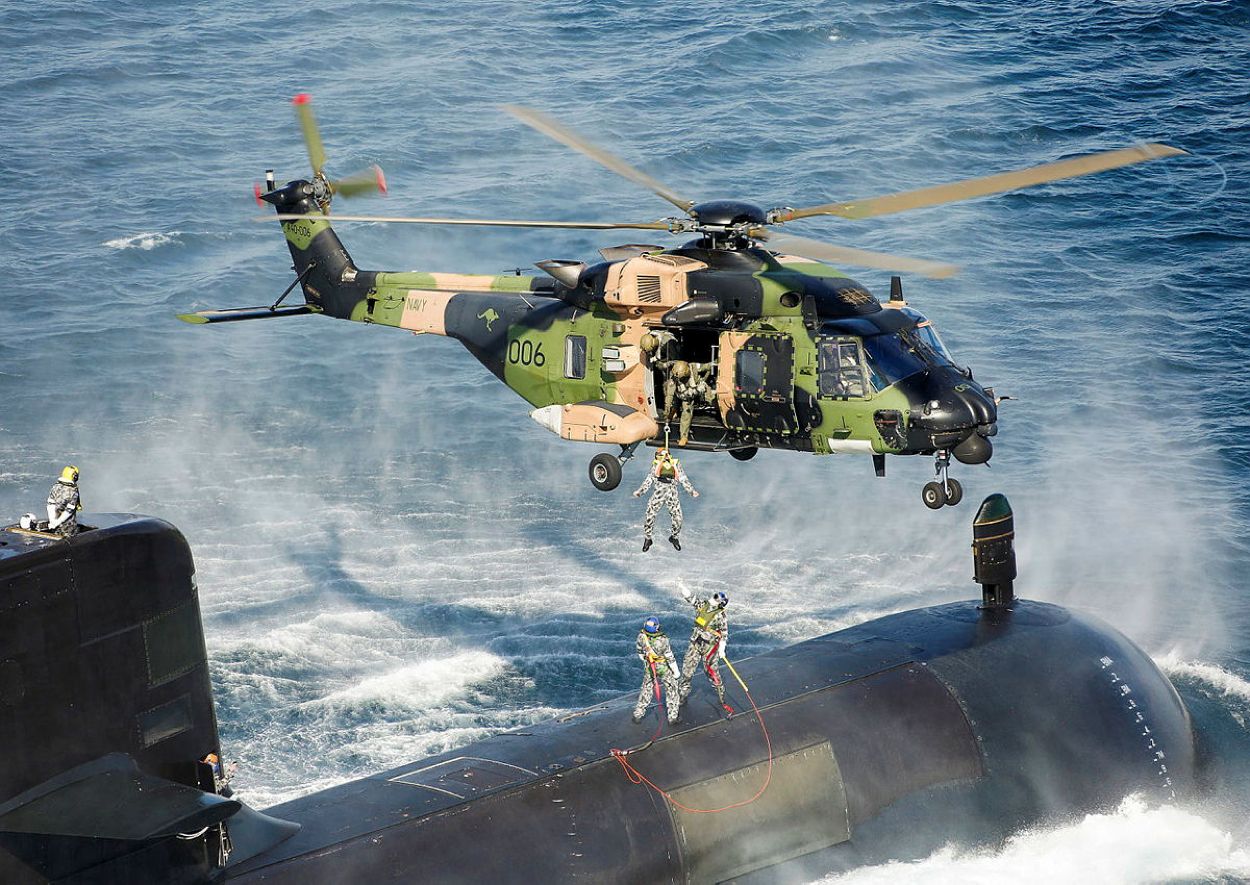Ukrainian officials and community members are intensifying their efforts to persuade the Australian government to reconsider its decision to retire and dismantle 45 MRH-90 Taipan helicopters instead of sending them to Ukraine.
The dispute centers around the fate of the helicopters grounded after a fatal crash during a multinational military exercise off the coast of Queensland in July 2023.
In September 2023, the MRH-90 helicopters were retired from active duty. Ukraine, grappling with the air dominance of Russian forces, officially requested the Taipans in December, arguing that they are essential for bolstering their defense capabilities.
Initially slated for withdrawal in 2037, the helicopters have a history of problems, resulting in fleet-wide groundings over the years.
However, Ukrainian supporters in Australia said that the helicopters could play a critical role on the Ukrainian front line, aiding in the fight for “freedom and democracy.“
They express frustration at the Australian government’s lack of communication regarding the decommissioning and burial of these helicopters.
Complicating matters, recent reports suggest that safety concerns about the Taipans may be less severe than initially portrayed.
Investigations have ruled out a connection between the fatal crash and a prior incident involving another Taipan, raising questions about whether safety issues are the sole basis for decommissioning or if other factors influence the decision.
The unfolding situation will likely extend as the Ukrainian community amplifies its dedicated campaign.
United in their cause, they rallied in Sydney on January 14, making a deliberate effort to sway public opinion and apply substantial pressure on the government to reconsider its stance.
Helicopters Headed To The Scrap Yard
Australian officials have maintained their stance on dismantling and burying the aging Taipan aircraft at a designated defense site. This decision stems from heightened concerns over the safety and reliability of the retiring Taipan fleet.
The phased-out Taipans are set to be replaced by 40 UH-60M Black Hawk helicopters. However, as of now, only a handful of these US-manufactured aircraft have been delivered to Australia.
Amidst these developments, Ukrainian Ambassador to Australia, Vasyl Myroshnychenko, remains hopeful for reconsideration but has not received a response yet.
Despite Myroshnychenko’s optimism, the disassembly process has already commenced, with no expressions of interest from other nations during the disposal phase.
An Australian Defense spokesperson said that the remaining airframes and systems would be disposed of in an environmentally friendly and cost-effective manner.
There are ongoing collaborative efforts with Airbus Australia Pacific and NATO Helicopter Industries to salvage essential spare parts from the MRH-90 fleet. The goal is to repurpose these components for use by other NH90 operators.
In an op-ed piece, Stefan Romaniw, Co-chair of the Australian Federation of Ukrainian Organisations, questioned the Australian government’s decision-making process.
He raised concerns about why the government did not proactively offer the MRH-90 helicopters to Ukraine before their premature retirement.

Romaniw contends that donating the MRH-90 fleet, spare parts, and support equipment would not impose future financial or support burdens on Australia.
Drawing attention to the fact that nine European allies of Ukraine operate variants of the NH-90 series, he argues that these allies have been generous contributors of military equipment and training.
Romaniw underscores that Ukraine, which already operates the Airbus Super Puma and has established supply chains in Europe, does not face the same supply chain and maintenance challenges Australia encountered with the MRH-90.
Despite mounting pressure from the Ukrainian community, the final decision rests with the Australian government.
It is plausible that the government has meticulously assessed the potential risks and benefits associated with deploying the retiring Taipans to assist Ukraine in its ongoing conflict with Russia.
Meanwhile, in a statement to local media, Acting Defense Minister Matt Thistlethwaite highlighted Australia’s robust support for Ukraine and its military in their endeavors to counter the war imposed by Russia.
Assistant Defence Minister Matt Thistlethwaite bid farewell to 90 troops last week as they departed for the UK to participate in training Ukrainian soldiers. This deployment brings the total number of Australian Defence Force (ADF) soldiers involved in five rotations to 370.
Australia is a significant non-NATO contributor to Ukraine’s war effort. Additionally, Canberra has implemented extensive sanctions targeting Russian politicians, military commanders, and business figures.
- Contact the author at ashishmichel(at)gmail.com
- Follow EurAsian Times on Google News




